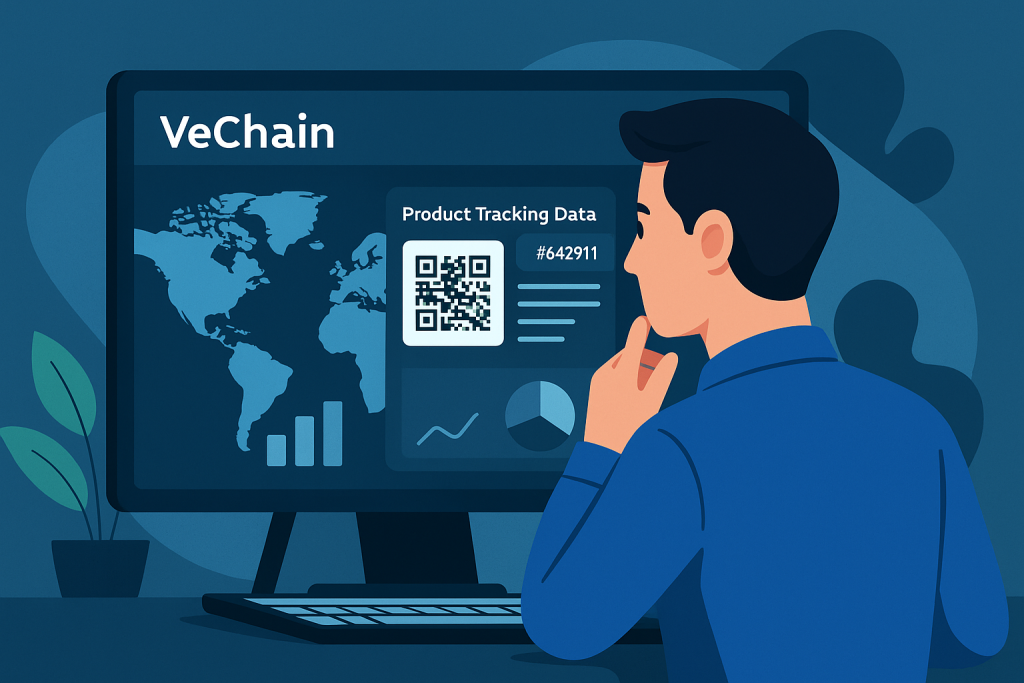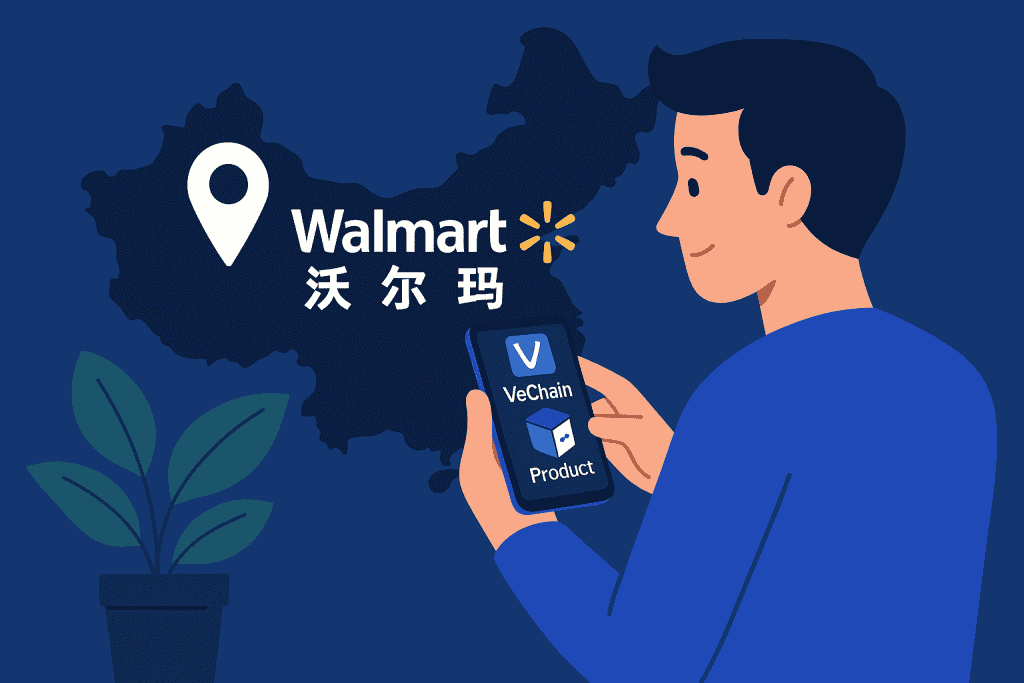
Over the past few years, I’ve followed dozens of blockchain projects. Many promised the moon with flashy websites and vague roadmaps, but most faded away or struggled to prove their worth. That’s why I kept my distance until I found one that offered something different. VeChain caught my eye not because of hype, but because of its real-world focus.
This platform wasn’t trying to reinvent money or build the next social network. Instead, it aimed to solve real problems—like supply chain inefficiencies, product fraud, and data transparency in industries that deal with physical goods. VeChain’s appeal lies in its clear vision and practical use. It helps companies track their products, protect their brand, and offer customers a way to verify what they’re buying.
In this review, I’ll share what I’ve learned about this platform, from how it works to where it’s already making a difference. Whether you’re an investor looking for utility or a business curious about blockchain, this post will help you understand why VeChain deserves your attention.
Overview of VeChain
VeChain is a blockchain platform designed for business applications. Its goal is to improve how companies track goods, share data, and verify authenticity across global supply chains. Developed by the VeChain Foundation, it combines blockchain technology with the Internet of Things (IoT) to offer transparency and trust.
Key features:
- Dual-token system: It uses VET to carry value and VTHO to pay for transactions. This setup stabilizes costs and keeps the network running smoothly.
- ToolChain: A user-friendly system that allows businesses to build blockchain solutions without hiring developers.
- Digital product tracking: Businesses can assign digital identities to physical items. These identities store product history and movement data.
- Partnerships: It works with major organizations, including PwC, BMW, DNV, and Walmart China.
This blend of business usability and advanced technology makes VeChain a leader in real-world blockchain applications.
In-Depth Analysis

To understand VeChain’s impact, we need to look deeper at how it performs across different areas like design, security, and real-world use.
User Experience and Design
This blockchain solution focuses heavily on making its technology easy to use. The ToolChain system allows businesses to integrate blockchain into their operations without writing code. For example, a company can track a product by attaching a QR code or NFC chip. Scanning that chip reveals the item’s entire history, from where it was made to how it was shipped.
This level of transparency builds trust between businesses and their customers. Companies can prove the quality of their products, and consumers can verify what they’re buying.
Network Performance
This technology runs on a Proof of Authority (PoA) system. This setup means that trusted nodes validate transactions instead of random miners. Because of this, the network is fast and energy-efficient. In performance tests, VeChain handled up to 10,000 transactions per second, which makes it suitable for industries that require real-time data.
By reducing energy use and speeding up processes, it becomes an attractive choice for companies aiming for both sustainability and speed.
Security and Transparency
Every validating node in this platform’s network is known and verified. These nodes follow strict Know Your Customer (KYC) procedures, which adds a layer of trust. This model helps prevent fraud and keeps the network clean.
It also works closely with DNV, a respected data assurance company. Together, they help businesses ensure that the information recorded on the blockchain is accurate, complete, and compliant with industry regulations.
Real-World Business Use

One of VeChain’s biggest success stories is its partnership with Walmart China. The company uses this technology to track fresh produce. Shoppers can scan a code to learn where the item was grown, when it was shipped, and how it was handled.
This platform also supports luxury brands by helping them fight counterfeit products. Brands embed smart chips in their goods. When scanned, these chips confirm the item’s authenticity. This helps protect brand reputation and gives buyers peace of mind.
Another application involves the automotive industry, where it tracks vehicle parts and maintenance records. This makes it easier to verify a car’s condition before resale.
These examples show that this crypto isn’t just a concept. It’s already working in the real world.
Comparison
VeChain often gets compared to Ethereum and IBM Blockchain, especially when it comes to enterprise applications. Here’s how they stack up.
| Feature | VeChain | Ethereum | IBM Blockchain |
|---|---|---|---|
| Consensus Model | Proof of Authority | Proof of Stake | Practical Byzantine Fault Tolerance |
| Speed (TPS) | Up to 10,000 | Around 30 (higher with ETH 2.0) | Varies based on setup |
| Focus Area | Business operations and logistics | Decentralized apps and DeFi | Large-scale enterprise systems |
| Developer Needs | Low-code, easy to use | Requires developer expertise | Built for IT professionals |
| Token Model | Dual-token (VET/VTHO) | Single-token (ETH) | No public token |
VeChain’s ease of use and focus on real business problems give it a strong edge over more complex or narrowly focused platforms.
Pros and Cons
Here’s a clear look at what makes this ecosystem worth considering, and where it still has room to grow.
| Pros | Cons |
|---|---|
| Trusted by global businesses | Limited decentralization |
| Designed for ease of use | Not as well-known as Ethereum |
| Fast and energy-efficient | Focuses mainly on enterprise users |
| Clear use cases in multiple industries | Less appeal to retail crypto investors |
| Strong regulatory partnerships | Regional regulations still evolving |
Conclusion
In a world full of blockchain ideas, VeChain has managed to stand out by focusing on action rather than promises. It doesn’t just talk about the future. It builds tools that companies can use today to improve trust, transparency, and accountability in their operations. This practical approach is what sets it apart from so many other projects.
Whether it’s tracking food freshness, verifying luxury goods, or making logistics more efficient, this has shown that blockchain can do more than power cryptocurrency. It can solve real problems in industries that touch our everyday lives.
If you’re looking for a platform that’s grounded, tested, and business-ready, VeChain checks all the boxes. It’s not just a smart investment of money but also of attention if you’re watching where blockchain is headed next.
Rating
Considering its speed, usability, and growing partnerships, VeChain earns high marks.
⭐️⭐️⭐️⭐️☆ (4.5 out of 5)
FAQs
What is VeChain and how does it help supply chains?
VeChain is a blockchain platform that improves supply chain transparency. It helps businesses track products from production to delivery, ensuring quality and authenticity.
Is VeChain a good investment opportunity?
Because of its strong partnerships and working use cases, VeChain is seen as a promising long-term project in the blockchain space, especially for those looking beyond crypto speculation.
How does VeChain differ from Ethereum in functionality?
VeChain focuses on business use, while Ethereum is more open-ended and developer-centric. VeChain also offers faster transactions and uses a dual-token system to reduce network fees.
Resources
- Tokize. VeChain VET: Features and Insights
- CryptoDold. VeChain Blockchain Overview
- Coin Bureau. Complete VeChain Review
- Koinly. Is VeChain a Good Investment?
- The Motley Fool. 3 Reasons to Buy VeChain
